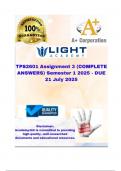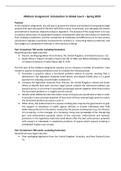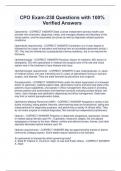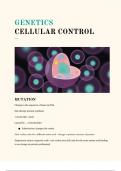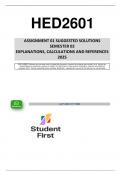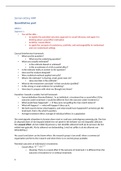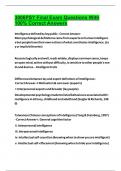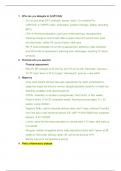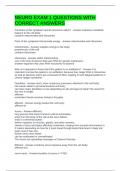Consumer behaviour
(articles main findings & terms definitions)
Week 1. Terms
Consumer behaviour = Reflects the totality of consumers decisions with respect to the
acquisistion, consumption and disposition of goods, services, activities, experiences,
people and ideas by (human) decision making units (over time).
Perception = the awareness or understanding of sensory information. Awareness and
interpretation of reality.
Sensation = occurs when we are exposed to a stimulus. (perception when we are aware
of the stimulus)
Exposure = bringing the stimulus to the consumer
Organizing = assembling sensory evidence into something recognizable
- Assimilation = share the same characteristics
- Accommodation = share some but not all characteristics. Need an adjustment
to fit.
- Contrast = Does not share any characteristics. Not fit to the category.
Reacting = physical and mental responses to the stimuli
Supraliminal = when the stimuli enters conscious awareness
Subliminal = When stimuli is detected by the senses but does not enter conscious
awareness
Subjective threshold = a function of attention and motivation (so you can from
subliminal to supraliminal)
Mere exposure effect = unreinforced/repeated exposure is sufficient to enhance
attitude towards the stimulus
Attention = devoting cognitive resources to the stimuli
Gestalt rules = a set of rules describing visual perception
- Proximity = elements that are close together tend to be viewed as part of the
same object; those farther apart tends to be viewed as part of different objects
- Similarity = elements that physically resemble each other tend to be viewed
as part of the same object; those that are physically dissimilar tend to be
viewed as different objects
- Continuity = incomplete or partially hidden objects tend to be viewed as whole
or complete terms.
Horizontal centrality effect = items in the center of a display attract more visual
attention, increasing the likelihood of consumer choice.
Gaze cascade effect = individuals display an avalanche of fixations on the to-be chosen
object in the final seconds of the gaze duration.
Central fixation bias = when a scene appears, the natural initial response is to look at
the center of it
,Preference for symmetry = individuals have a propensity to look longer at the axis of
symmetry when exposed to a symmetric picture.
Preference for centrality = according to the center-stage-effect consumers hold the
lay belief that in retail contexts the products placed in central positions are more popular.
Reflecting the overall quality of the product which leads consumers to systematically
prefer items in the center.
Memory = psychological process by which knowledge is sorted and recorded.
Retrieval = the process of remembering or accessing what was previously stored in
memory.
Sensory memory = temporarily store input from 5 senses. Retained only briefly.
- Olfactory memory = smelling
- Iconic memory = seeing
- Echoic memory = hearing
Working memory = incoming information that is interpreted with existing knowledge or
kept available for more processing.
- Imagery processing = smell, taste, visual of something
- Discursive processing = the word
Long-term memory = information is permanently stored for later use
- Episodic memory = knowledge about oneself and his or hers personal past
experiences
- Semantic memory = general knowledge about an entity, detached from
specific episodes (facts)
Memory associations = when presented with ambigious information in the form of
concepts that share some associations, individuals may initially think about many
possible references and rely on contextual cues to narrow their toughts to the intended
one.
Associative view of memory = can ad-hoc association between two directly related
nodes be created merely because these nodes individual associations with a common
third node are activated at simultaneous or temporally moments.
Sensory marketing = marketing that engages the consumers senses and affects their
perception, judgement and behaviour in a subconscious way.
, Week 1. Articles
Bornstein, Robert F., and Paul R. D'agostino. (1992) "Stimulus recognition and the mere
exposure effect." Journal of Personality and Social Psychology
Objective: Conduct a laboratory-based investigation to directly test the impact of stimuli
duration, particularly comparing subliminal (5-ms) stimuli with longer-duration (500 ms)
stimuli, on the magnitude of the mere exposure effect as proposed by Zajonc (1968).
Main Findings:
Magnitude of Mere Exposure Effect:
Greater Impact of Subliminal Stimuli: Subliminal stimuli (5-ms) resulted in
significantly larger mere exposure effects compared to stimuli presented for a
longer duration (500 ms).
Consistent Results Across Stimulus Types: The observed pattern held true for
different types of stimuli, including polygons, Welsh figures, and photographs.
Implications:
Theoretical Insights: The findings challenge existing theoretical models of the
mere exposure effect and prompt a reevaluation of the role of conscious
awareness in influencing the magnitude of exposure effects.
Subliminal Dominance: Subliminal stimuli, perceived without conscious
awareness, exhibit a more substantial influence on the mere exposure effect,
suggesting the dominance of subliminal processing in this phenomenon.
Experimental Design:
Experiment 1 and 2: Two experiments were conducted, employing polygon
stimuli (Experiment 1), Welsh figure stimuli (Experiment 2), and photograph
stimuli (used in both experiments).
Duration Comparison: The study systematically compared the impact of 5-ms
(subliminal) stimuli with 500-ms stimuli to understand the role of duration in the
mere exposure effect.
Conclusion: The research provides empirical support to the meta-analytical findings of
Bornstein (1989a) by directly testing and confirming that subliminal stimuli, perceived
without awareness, elicit larger mere exposure effects than consciously perceived stimuli,
across various stimulus types. These results challenge prior theoretical assumptions and
contribute to a deeper understanding of the mechanisms underlying the mere exposure
effect.
Atalay, A. Selin, H. Onur Bodur, and Dina Rasolofoarison (2012), "Shining in the center:
Central gaze cascade effect on product choice." Journal of Consumer
Objective: Explore and understand consumers' inclination to choose options positioned
in the center of an array, focusing on the underlying processes that drive this
phenomenon.
Main Findings:
Visual Attention and Choice:
Central Brand Preference: Brands positioned in the horizontal center of an
array attract more visual attention and are more likely to be chosen by consumers.
Eye-Tracking Studies: Two eye-tracking studies provided evidence of an initial
central fixation bias, indicating a tendency for individuals to first focus on the
central option. A central gaze cascade effect was observed, demonstrating an
increasing concentration of attention on the central option right before making a
decision.
Choice Correlation: Among the attention processes, the central gaze cascade
effect was found to be directly related to the choice of the central option,
emphasizing its significance in influencing consumer decisions.
Offline Study:
(articles main findings & terms definitions)
Week 1. Terms
Consumer behaviour = Reflects the totality of consumers decisions with respect to the
acquisistion, consumption and disposition of goods, services, activities, experiences,
people and ideas by (human) decision making units (over time).
Perception = the awareness or understanding of sensory information. Awareness and
interpretation of reality.
Sensation = occurs when we are exposed to a stimulus. (perception when we are aware
of the stimulus)
Exposure = bringing the stimulus to the consumer
Organizing = assembling sensory evidence into something recognizable
- Assimilation = share the same characteristics
- Accommodation = share some but not all characteristics. Need an adjustment
to fit.
- Contrast = Does not share any characteristics. Not fit to the category.
Reacting = physical and mental responses to the stimuli
Supraliminal = when the stimuli enters conscious awareness
Subliminal = When stimuli is detected by the senses but does not enter conscious
awareness
Subjective threshold = a function of attention and motivation (so you can from
subliminal to supraliminal)
Mere exposure effect = unreinforced/repeated exposure is sufficient to enhance
attitude towards the stimulus
Attention = devoting cognitive resources to the stimuli
Gestalt rules = a set of rules describing visual perception
- Proximity = elements that are close together tend to be viewed as part of the
same object; those farther apart tends to be viewed as part of different objects
- Similarity = elements that physically resemble each other tend to be viewed
as part of the same object; those that are physically dissimilar tend to be
viewed as different objects
- Continuity = incomplete or partially hidden objects tend to be viewed as whole
or complete terms.
Horizontal centrality effect = items in the center of a display attract more visual
attention, increasing the likelihood of consumer choice.
Gaze cascade effect = individuals display an avalanche of fixations on the to-be chosen
object in the final seconds of the gaze duration.
Central fixation bias = when a scene appears, the natural initial response is to look at
the center of it
,Preference for symmetry = individuals have a propensity to look longer at the axis of
symmetry when exposed to a symmetric picture.
Preference for centrality = according to the center-stage-effect consumers hold the
lay belief that in retail contexts the products placed in central positions are more popular.
Reflecting the overall quality of the product which leads consumers to systematically
prefer items in the center.
Memory = psychological process by which knowledge is sorted and recorded.
Retrieval = the process of remembering or accessing what was previously stored in
memory.
Sensory memory = temporarily store input from 5 senses. Retained only briefly.
- Olfactory memory = smelling
- Iconic memory = seeing
- Echoic memory = hearing
Working memory = incoming information that is interpreted with existing knowledge or
kept available for more processing.
- Imagery processing = smell, taste, visual of something
- Discursive processing = the word
Long-term memory = information is permanently stored for later use
- Episodic memory = knowledge about oneself and his or hers personal past
experiences
- Semantic memory = general knowledge about an entity, detached from
specific episodes (facts)
Memory associations = when presented with ambigious information in the form of
concepts that share some associations, individuals may initially think about many
possible references and rely on contextual cues to narrow their toughts to the intended
one.
Associative view of memory = can ad-hoc association between two directly related
nodes be created merely because these nodes individual associations with a common
third node are activated at simultaneous or temporally moments.
Sensory marketing = marketing that engages the consumers senses and affects their
perception, judgement and behaviour in a subconscious way.
, Week 1. Articles
Bornstein, Robert F., and Paul R. D'agostino. (1992) "Stimulus recognition and the mere
exposure effect." Journal of Personality and Social Psychology
Objective: Conduct a laboratory-based investigation to directly test the impact of stimuli
duration, particularly comparing subliminal (5-ms) stimuli with longer-duration (500 ms)
stimuli, on the magnitude of the mere exposure effect as proposed by Zajonc (1968).
Main Findings:
Magnitude of Mere Exposure Effect:
Greater Impact of Subliminal Stimuli: Subliminal stimuli (5-ms) resulted in
significantly larger mere exposure effects compared to stimuli presented for a
longer duration (500 ms).
Consistent Results Across Stimulus Types: The observed pattern held true for
different types of stimuli, including polygons, Welsh figures, and photographs.
Implications:
Theoretical Insights: The findings challenge existing theoretical models of the
mere exposure effect and prompt a reevaluation of the role of conscious
awareness in influencing the magnitude of exposure effects.
Subliminal Dominance: Subliminal stimuli, perceived without conscious
awareness, exhibit a more substantial influence on the mere exposure effect,
suggesting the dominance of subliminal processing in this phenomenon.
Experimental Design:
Experiment 1 and 2: Two experiments were conducted, employing polygon
stimuli (Experiment 1), Welsh figure stimuli (Experiment 2), and photograph
stimuli (used in both experiments).
Duration Comparison: The study systematically compared the impact of 5-ms
(subliminal) stimuli with 500-ms stimuli to understand the role of duration in the
mere exposure effect.
Conclusion: The research provides empirical support to the meta-analytical findings of
Bornstein (1989a) by directly testing and confirming that subliminal stimuli, perceived
without awareness, elicit larger mere exposure effects than consciously perceived stimuli,
across various stimulus types. These results challenge prior theoretical assumptions and
contribute to a deeper understanding of the mechanisms underlying the mere exposure
effect.
Atalay, A. Selin, H. Onur Bodur, and Dina Rasolofoarison (2012), "Shining in the center:
Central gaze cascade effect on product choice." Journal of Consumer
Objective: Explore and understand consumers' inclination to choose options positioned
in the center of an array, focusing on the underlying processes that drive this
phenomenon.
Main Findings:
Visual Attention and Choice:
Central Brand Preference: Brands positioned in the horizontal center of an
array attract more visual attention and are more likely to be chosen by consumers.
Eye-Tracking Studies: Two eye-tracking studies provided evidence of an initial
central fixation bias, indicating a tendency for individuals to first focus on the
central option. A central gaze cascade effect was observed, demonstrating an
increasing concentration of attention on the central option right before making a
decision.
Choice Correlation: Among the attention processes, the central gaze cascade
effect was found to be directly related to the choice of the central option,
emphasizing its significance in influencing consumer decisions.
Offline Study:

